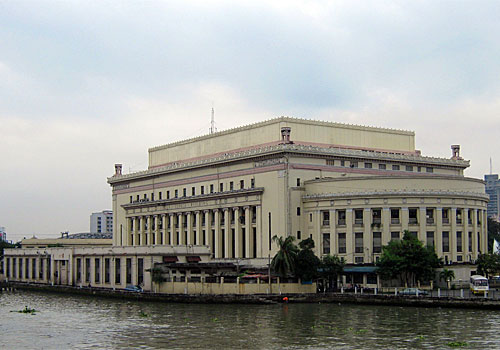
Technology and the Turnround of the South African Post Office
Mail & Express Review February 2009 Creating a Profitable Business
Within the space of seven years, the South African Post Office (SAPO) has turned a ZAR900 million annual loss into an operating profit of more than ZAR500 million. It now has a solid platform on which to implement a newly unveiled growth strategy supported by a new business model.
The South African Post Office of 2008 is a far cry from the bloated bureaucracy that was created as an independent entity in 1991. It has evolved from a government department into a modern, progressive organisation that is rapidly shedding the negative perceptions of the past. Today, it is a dynamic, innovative business that measures its success in terms of performance and takes its kudos from a growing number of satisfied customers.
To hear Group CEO Motshoanetsi Lefoka tell it, the greatest benefit of the South African Post Office’s reversal of technfortunes is the way it has been able to start delivering value to a broad spectrum of South Africans. The man in the street has improved access to services. Big business is getting better, and more, services than ever. Government service delivery and revenue targets are being met. The country as a whole, and the needs of a developing economy, are benefiting through sustained innovation.
The successful turnaround strategy has been built on four key business imperatives: customer service, impeccable financial management, ongoing people development, and a strong focus on growth.
Some of the financial highlights that have been achieved since 2004 include:
- 1 Raising turnover by nearly 30% to more than ZAR5 billion whilst increasing operating expenses only.18%.
- 2 Almost doubling the amount of cash being generated from operations.
- 3 Increasing the Postbank depositor base by almost 64%.
- 4 Reducing the fleet by 35% whilst maintaining a 92.1% delivery standard.
- 5 Reducing debtors’ days sales outstanding to 19 days, resulting in a major cash flow benefit.
One of the cornerstones of South African Post Office’s success is the way it is using technology in innovative ways to lower costs across the board, to make business critical processes more efficient, and to provide additional functionality to a customer base increasingly used to choice.
Technology and Large Businesses
A prime example is the company’s eBDN (electronic bulk mail delivery notes) system, which has revolutionised the delivery of bulk mail in South Africa by allowing business customers to handle all documentation relating to their bulk mail online.
With development carried out completely in house, the costs of the system have been negligible , but the role of eBDN in the South African Post Office’s revived fortunes cannot be underestimated. Bulk mail alone accounts for some 70% of the South African Post Office’s income, in excess of ZAR2 billion per year.
It is a major departure from the previous unwieldy paper based system, and has realised numerous benefits, including significant cost and time savings, elimination of duplication, reduced fraud and errors, and vastly improved cash flow.
No longer is there money left lying on the table owing to lost or faulty documentation. Bulk mail customers now pay in 19 days, as opposed to 63 days a few years ago. And because customers are now finding it easier to do business with the South African Post Office, revenues are looking healthy in an era of global declining mail volumes.
The simple act of trimming back debtors’ days has had a two pronged effect on the company’s fortunes: it has reduced working capital, and simultaneously freed up ZAR100 million in cash
Technology and SAPO’s Wider Role
South Africa has an area of more than 1.2 million square kilometres, making the country larger than Austria, Belgium, France, Germany, Luxembourg, the Netherlands and Switzerland combined. SAPO has a universal service obligation within the country.With more than 2,000 outlets and 5,500 service points, it is one of the largest business undertakings in South Africa.
Today there is a growing body of evidence regarding the crucial social and economic roles local post offices play in their communities. Not only do post offices provide a wide range of postal, government and commercial services, but often their very existence helps keep open retail outlets in rural and deprived urban areas.
To support its universal service obligation, SAPO has developed a geo coding system, using advanced technology, to meet the needs of the rural community. Villagers are now proud to have an address and access to economic services previously denied to them. In 2007 alone, the South African Post Office rolled out more than a million new addresses or delivery points.
Furthermore, to provide underserved segments of society with access to new electronic media, SAPO has opened more than 800 public information terminals (PITs) in its branches across the country. PIT is essentially an Internet enabled terminal in a post office, and PITs form part of an ambitious plan to ease some three million South African households into the Information Age by giving them e-mail addresses and access to government information.
An extension of this approach is the Thusong Post Office, an initiative with other Government Departments to provide holistic services to communities, mainly within rural areas and in under utilised offices. They will be playing an important role in providing access to connectivity and services for many communities outside the reach of the formal marketplace.
Technology and Business Processes
SAPO was determined to strengthen its business platform across the organisation, in order to transform itself into a newer, more tech savvy service delivery organisation.
The first step towards was to create a standardised and consolidated IT platform across the groups heterogeneous and complex IT environments and which would provide operational improvements across the Post Office’s finance, human resources, mail operations, sourcing and real estate asset management functions.
The application scope of mySAP ERP 2005 Re-implementation was to replace the core ERP system (SAP 4.5 and 4.7) used by the Post Office and CFG (a subsidiary), and to consolidate the systems into one standardised system.To deploy the new system, the team integrated eight SAP modules, and implemented 340 custom components (reports, interfaces, conversions, extensions, forms, workflows) which were brought down from 3,000 in the old system. More than 1,800 end users on the system were trained in less than 12 weeks. Furthermore, the team converted approximately 20 million data records from 3 source legacy systems.
In all, 22 systems were integrated and the company launched a change management programme the likes of which has never been seen in the Post Office before.
The system went live in September 2007 and from the very first day the company was able to pay its employees (some 16,000 permanent and 15,000 contract and temporary workers) as well as over 18,000 creditors. Also from the very first day, the company was able to recognise its revenue from almost 77,000 debtors and around a thousand bulk mailers.
Building on Success
“If we’re going to grow, it’s important that new services are introduced to meet the changing needs of customers,” says CEO Lefoka. “We have largely entrenched our position as a trusted partner to the people, delivering against our social obligations, but we need to continue combining products and technology to make a difference in the lives of ordinary South Africans. We’re ready for the next phase. We have cut all the costs we can, and our new strategy is focused strongly on consolidation and growth.”
If it gets its strategic priorities right, SAPO believes that it will be able to grow revenues by as much as 8% per annum, and increase profitability by between 10% and 15% over the next three years.
“We’re increasing operational efficiency” continues Lefoka. “We’re adding value for our customers and enhancing our performance based culture, whilst embarking on corporate social initiatives to give back to the communities that are supporting us. We’ve put a environmental plan in place. It’s all in our Strategic Plan, defining the strategies we’re following to protect the right of everyone in South Africa – no matter who or where – to affordable, universal services.”
In the journey ahead, the South African Post Office has identified a number of important focus areas, These include
- 1 Consolidation of service delivery functions into distinct Logistics, Mail and Financial Services divisions.
- 2 Re-evaluation of processes and policies to drive additional productivity, efficiency and competitiveness.
- 3 Consolidation of support functions into a single platform across the group.
- 4 Corporatisation of the Postbank division.
- 5 Brand equity enhancement for both the group as a whole and its various subsidiaries.
- 6 Enhancement of SAPO’s role in the electronic communications space in South Africa and elsewhere in Africa.
- 7 Continuing to drive culture change towards a more people orientated and customer centric approach.
Technology ad Financial Services
One of the company’s key growth areas is financial services, where it has significantly strengthened its market share and product offerings. In the past year, Postbank customers opened 673,000 new accounts, raising the depositors’ book to ZAR2 billion.
Postbank leads the country’s big banks in Mzansi accounts, which cater for low income earners, and has also introduced targeted products for the previously unbanked, namely Mothusi loans and Thuso insurance products.
Value added services now being offered include e-commerce transactions and online bill presentment, a service which collects bills or traffic fines from various providers and aggregates them for the consumer. In effect, it is an online postbox in which consumers can receive and pay all their bills and statements.
Facilitating across the counter and across the Internet bill payments for numerous companies is proving to be extremely lucrative, and also an effective brand building tool.
Research houses and analysts are practically universal in their forecasts for dramatic growth in electronic bill payment and presentment (EBPP) services. They suggest the widespread implementation of electronic bill presentment over the next few years will increase EBPP volumes by as much as 500%, whilst reducing paper based volume by more than 50%.
The Way Ahead
Still, much work remains. There is the small matter of wrestling government business back from private operators, and using the South African Post Office’s vast national infrastructure to establish itself as a leader in the field of logistics.
“While there’s no doubt that a major milestone in this transformation journey is the achievement of a profit at operational level, it is important to recognise the strategic imperatives that have brought us to this point. And it’s critical that the South African Post Office continues to transform itself in order to achieve its vision of being a leader in its field, whatever it takes,” concludes CEO Lefoka.













